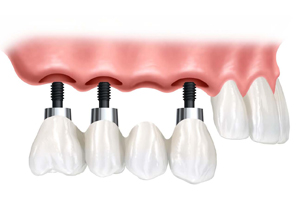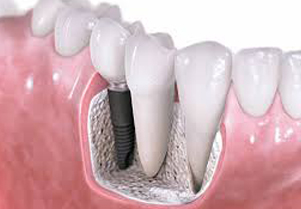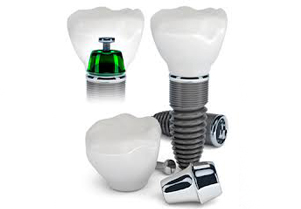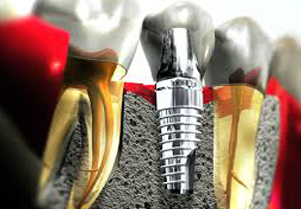SERVICII

Implantology
Description
How will you know if you are suitable for implants?
When consulting someone to find out more about dental implants you will be expected to answer detailed questions concerning your medical history and there will be a complete examination of your mouth and remainingteeth to discover the nature and extent of any current dental problems. If you do not have up-to-date x-rays of yourremaining teeth you may also be required to have new ones taken. Sometimes models and photos will also be needed so that these can be examined after your visit.
Why is the surgical procedure a three-step process?
The most widely practiced method of placing dental implants is a "staged surgery" procedure. The first stage consists of surgically burying the implant flush with the bone but underneath the gum. This protects the implant from force while it is healing. At the end of this healing period, the implant needs to be surgically exposed by removing some of the overlying gum.
At this second stage, the surgeon checks the implant for its successful integration and connects some form of post which penetrates through the gum into the mouth. This post is called the abutment. Abutments come in many forms and can be stock-manufactured or custom-molded by your dentist and a laboratory. The gum is allowed to heal around the abutment and form a cuff or collar through which the dentist has access to the implant when preparing the final restorative stage of placing the prosthetic tooth or tteeth. However, the implant still requires adequate healing time for the bone to osseointegrate.
The abutments must also be protected from chewing forces during this period to assure effective bony integration and successful healing. Once the implants have had a chance to heal and have been tested for successful integration, the final restorative step takes place. This stage consists of fabricating and connecting the prosthetic teeth to the successfully osseointegrated implants.
How long does treatment take?
For routine cases, from the time of implant placement to the time of placing the first teeth, treatment times can vary between 6 weeks and 6 months. The availability of better bone can be used to decrease treatment time, whilstmore time and care must be taken with poorer bone, which can therefore extend treatment times beyond six months.
Is it uncomfortable when the implants are placed?
Most patients will be very familiar with the dental anaesthetics used for routine dentistry and will know how effective they are. Implants are placed using the same anaesthesia. Depending upon the complexity of your case, the operation might take anything from 30 minutes for a single implant, to several hours for complex bone grafting and multiple implant placements.



